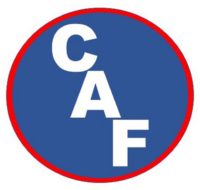Basic Theory of CAFS use in Structure Fires.
The use of CAFS technology provides the most efficient and effective production of finished foam currently available to the fire service. The bubble structure produced by these systems is highly superior to aspirated foam in that the structure is smaller, uniform and highly compacted. This allows the foam to have more surface area that is exposed to heat and retains its form for a longer time thus accepting more BTU’s. The affinity for carbon allows for the foam to stick to vertical and under hanging surfaces for an extended period of time. This improves our abilities to protect exposures as well as extends the time that water is held in place for BTU absorption during aggressive interior fire attack. The highly compacted nature of CAF allows for the utilization of the additional horsepower provided by the injection of a compressed air stream. This additional energy results in a fire stream with added reach and penetration into the structure. From a safety perspective this reach increases the standoff distance for the nozzle operator.
Utilization of CAF on structure fire incidents allows us to attack the fire tetrahedron from multiple sides simultaneously. Foremost is the rapid cooling of the environment and combustibles. This is achieved by the increased surface area of each gallon of water discharged. A cooling rate of interior compartment fires of 20 degrees Fahrenheit per second is not uncommon during a correctly applied CAFS attack.
The ability of the CAF to adhere to most surfaces not only allows for high heat absorption through increased surface area but also isolates the Class “A” fuels. This is evidenced by the rapid change in smoke conditions. Within moments of the opening of a CAF line, the smoke issuing from the involved structure will turn white. This is normally not due to steam but a result of the collection of unburned carbon particulates from the smoke. This collection of unburned fuels is seen as a black crust of carbon on the white foam blanket through out the structure. The reduction of carbon in the atmosphere does improve visibility. But more importantly the removal of this fuel reduces the occurrence of rollover which is generally regarded as a precursor to flashover.
Because of the reduced surface tension of the water as well as the carbon loving qualities of the solution, quick wetting and increased fuel moisture content reduces the occurrence of rekindles and smoldering.
The insulative quality of the highly compacted foam separates the fuels from the oxygen available in the atmosphere that support combustion. This is one of the few qualities that Class “A” and “B” have in common. A moderate smothering effect is provided by both types of foam.
As you can see CAF attacks common fire problems by acting on the heat, fuel and oxygen sides of the fire tetrahedron simultaneously. All this is done by simply altering the physical form of water – it’s still the water doing the work!
With the thought in mind that “the water does the work”, do not be tempted to dramatically reduce attack line GPM water flows in a misguided attempt to save water. The idea that CAFS saves water is true. But that water savings comes from a number of areas, not just the initial attack. No safety minded firefighter would consider entering and attacking a structure fire flowing 20 to 30 GPM of plain water and they shouldn’t consider it just because that water is now converted to highly visible foam. Most agencies versed in CAFS structural attacks are using 80 to 95 GPM of solution flow. The term “solution flow” is important to understand. That is the “liquid” leaving the pump and is measured prior to conversion to finished foam. The actual nozzle GPM discharge is dependant on many factors such as line size, smooth bore tip size, expansion ratio and solution to air ratio to name a few. Suffice it to say that when done by a properly trained firefighter, the actual nozzle discharge GPM is more than adequate for today’s structural fire problems.
The idea is to overwhelm the BTU production process as quickly as possible! That can’t be accomplished in a safe and expedient manner with low flows. On the other hand, attempting to achieve recommended “plain water” GPM flows will not always give a better result. First, many small to mid size systems will not provide those types of flows due to plumbing size. Secondly, the systems with those greater flow capabilities may require an open butt nozzle and elevated discharge pressures. This can generate extreme nozzle reaction which has been noted by several agencies to be a hazard in it self, especially to firefighters of smaller stature. You don’t use a howitzer for a housefly!
GPM flows, tip sizes, liquid to air ratios and on and on! Seems like enough to set your mind swirling even on a good day, much less at zero dark- thirty in poor weather. That’s where a tried and proven training program comes into play. A program that will take not only a firefighter but also an entire agency including support staff through the transition to CAFS is essential. That program must have a proven track record with agencies of all sizes, capabilities and demographics. Live fire use during an all-inclusive training program is essential to the safe use of CAFS. Firefighters are “show me and show me how” type folks. A couple hour lecture is not going to fully prepare them for a firefight, if it did, fire academies would be a whole lot shorter. Get good CAFS training… NOW!
Be Safe





































